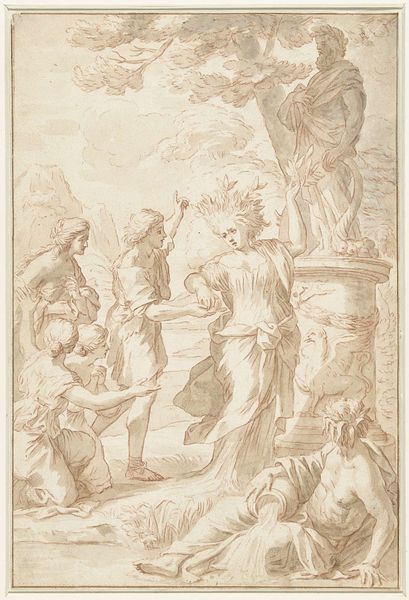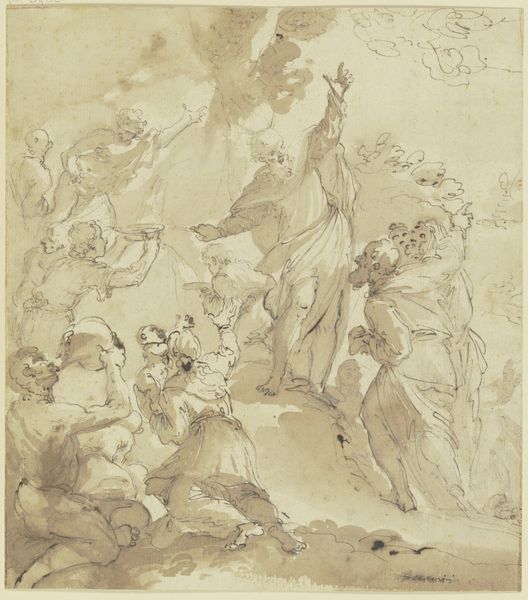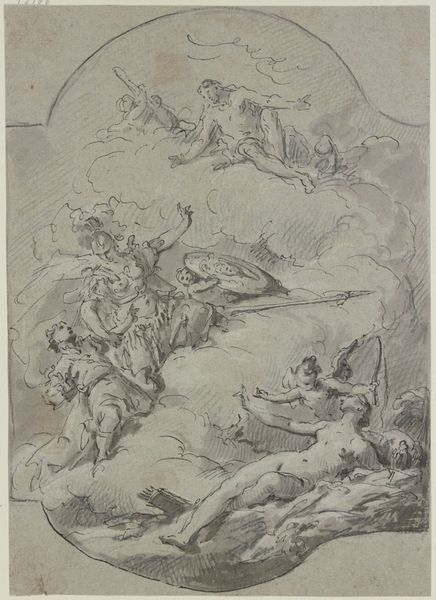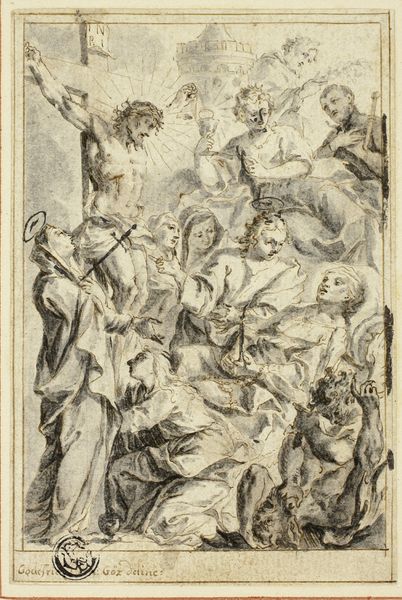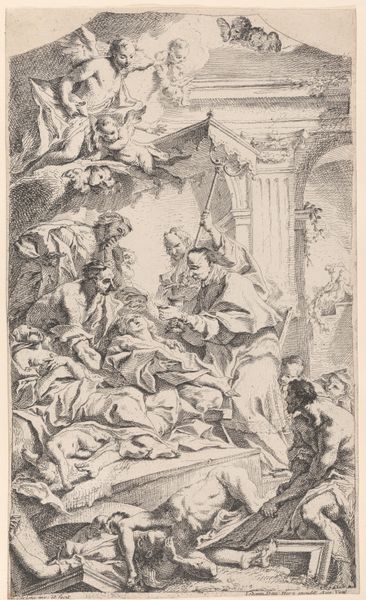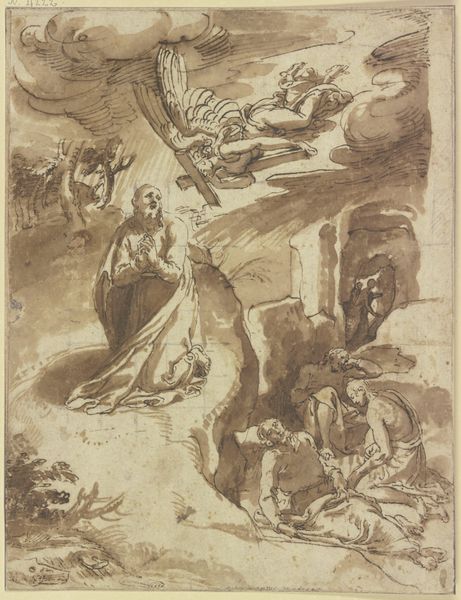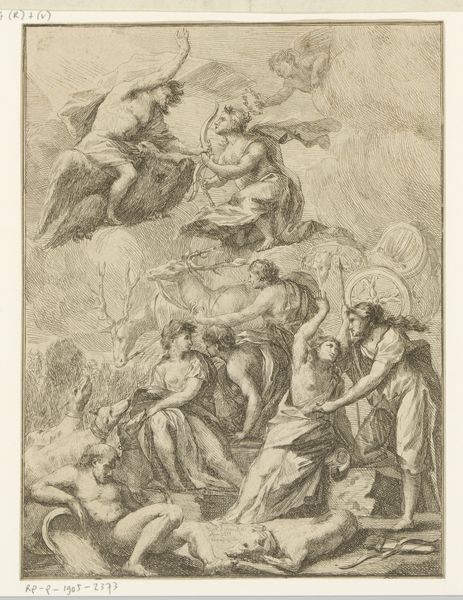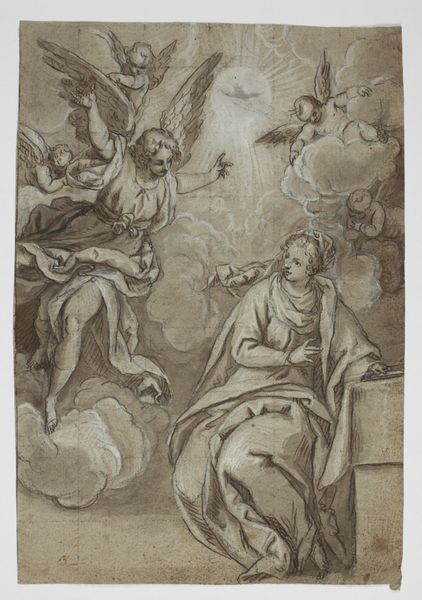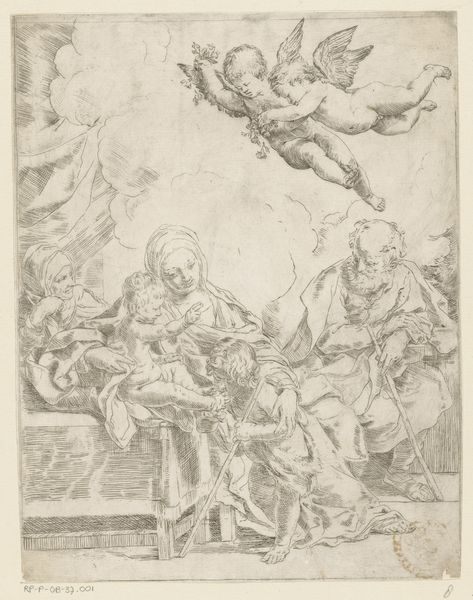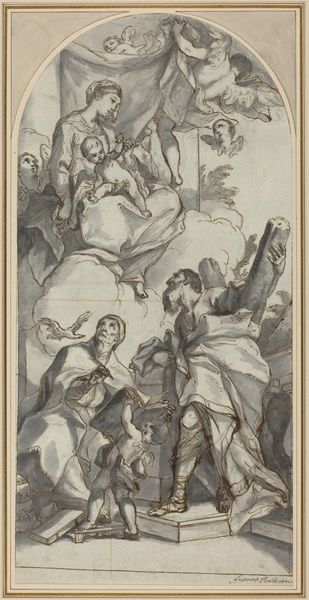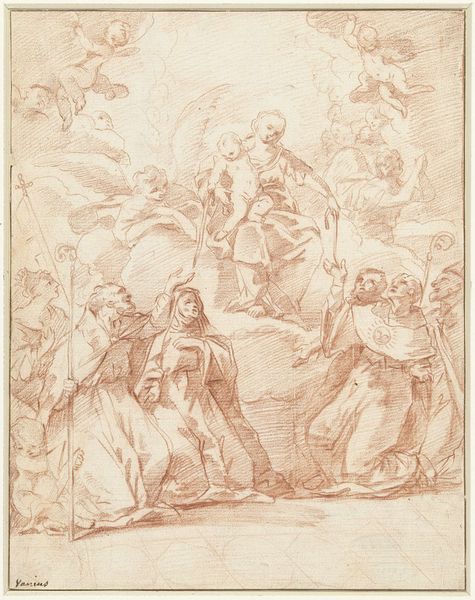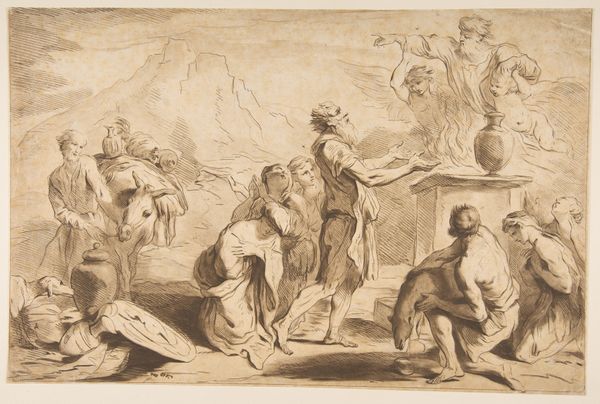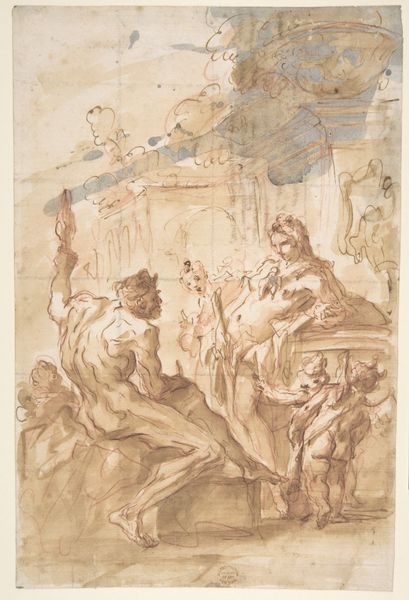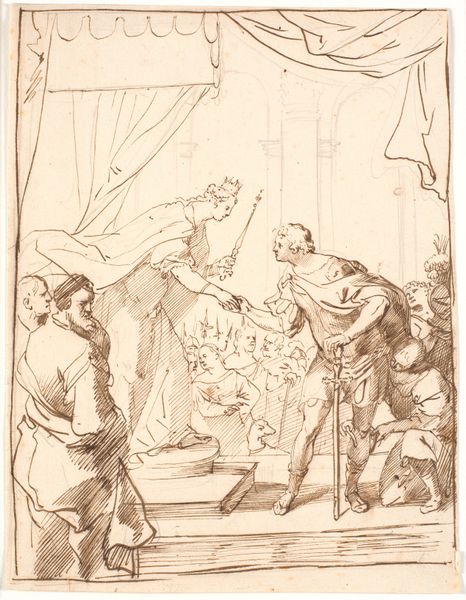
drawing, paper, ink
#
drawing
#
allegory
#
baroque
#
figuration
#
paper
#
ink
#
history-painting
Copyright: Public Domain: Artvee
Editor: This is Charles-Joseph Natoire's "Assumption of the Virgin," an ink drawing on paper. There's such dynamic movement within this monochromatic palette! I’m struck by how the artist depicted this rather iconic scene of religious ecstasy. How do you read the socio-historical implications embedded in a piece like this? Curator: This drawing presents an opportunity to delve into the power dynamics within religious art of the Baroque era. Natoire’s representation, with its emphasis on the Virgin Mary ascending amidst a throng of male figures, can be examined through a feminist lens. How does the glorification of the Virgin intersect with the realities of women's lives during this time? Is this image promoting the social standing of women or is it a means of control by constructing them into ideals, thus undermining their individuality and agency? Editor: That’s such an insightful way of putting it! I guess I never really thought about the power dynamics present in these idealized religious scenes. It’s not just about spiritual upliftment, is it? Curator: Exactly. We must consider the broader cultural context. How did religious institutions utilize art to perpetuate specific social hierarchies, particularly concerning gender and class? What is interesting about the 'Assumption' specifically, is how that power gets situated with Mary, a figure often evoked for intercession and in some ways represents, if not "empowerment," a space for expression, even autonomy, within a system heavily governed by patriarchal rules and structures. Is she complicit or a symbol of resistance in some form? Editor: This has really expanded my understanding of how to analyze art beyond just the aesthetic level. There are social structures encoded into the art itself, like a time capsule of ideas and values. Curator: Precisely. And recognizing this empowers us to engage critically with art and challenge conventional interpretations, prompting richer dialogues. Editor: It’s changed how I look at historical artwork and how I want to examine it now. Thanks!
Comments
No comments
Be the first to comment and join the conversation on the ultimate creative platform.
